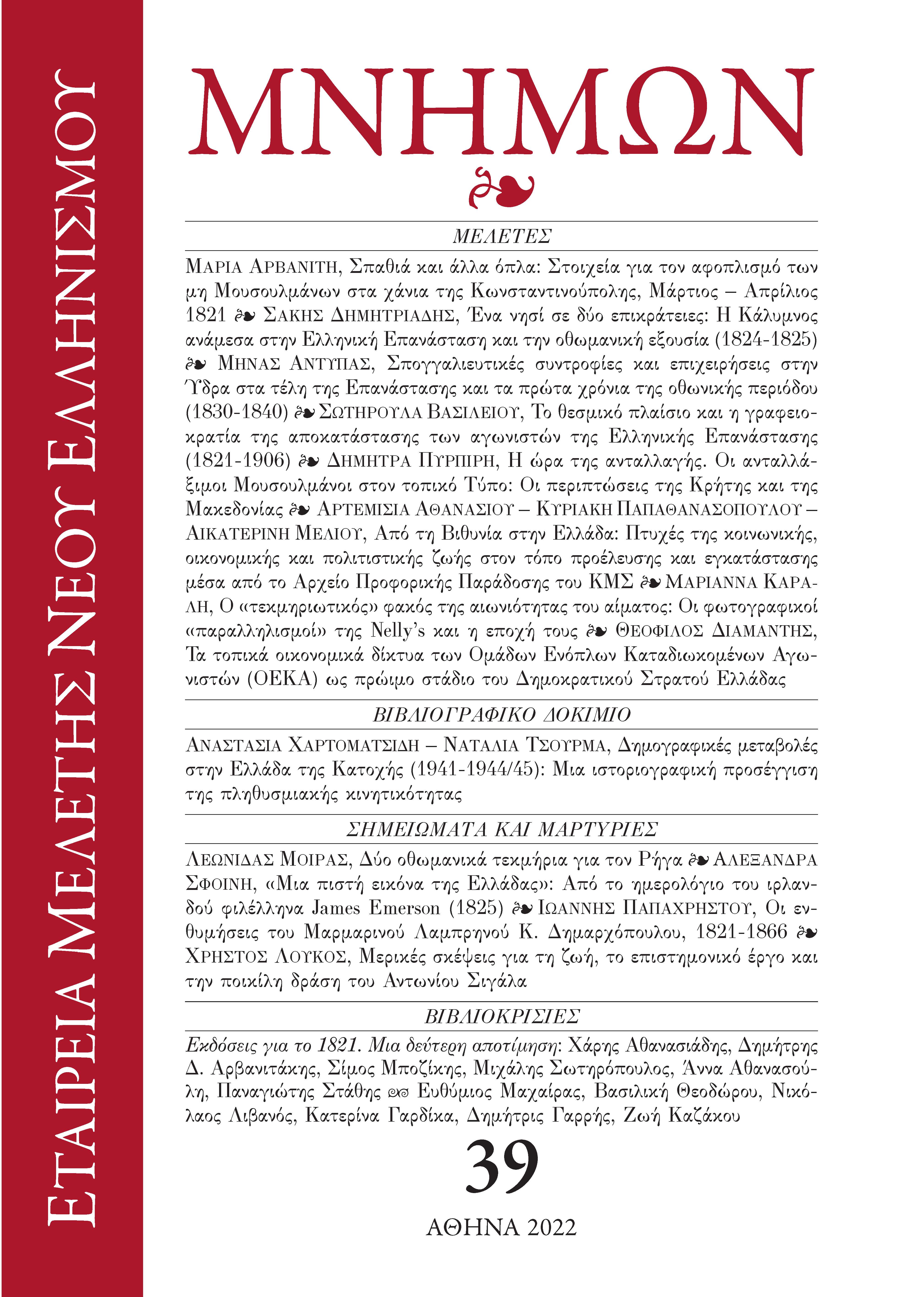DEMOGRAPHIC CHANGES DURING THE OCCUPATION OF GREECE (1941-1944/45) A HISTORIOGRAPHIC APPROACH OF POPULATION MOBILITY
Abstract
The article attempts to compose a map of the greek historiographical ac¬counts that deal with the composition of the population in Greece and the question of demographic changes that took place in the country during the German occupation (1941-1944/1945). In the framework of the research program ‘‘Database of German military and paramilitary units in Greece 1941-1944/45’’, the need arose to investigate demographic changes in or-der to gain a deeper understanding of the imprint of German occupational forces on the Greek population. The article tackles issues of historical demography, analyses the different sources of recording of the popula¬tional rearrangements that occurred in Greece during the Second World War, while approaching contributions of the greek historiography, in which many aspects of the German occupation are studied. Parameters, like losses on the battlefields, birth rates and mortality from famine, disease and executions, the Holocaust and the issue of Greek prisoners of war and workers of the Reich, the violent and involuntary movements of populations inside and outside Greece, and the integration of a signif¬icant number of people into resistance organizations, actively reflect the fluidity of the quantitative and qualitative characteristics attributed to the numbers of a census. Finally, an approximate and conventional nu¬merical representation of the changes that took place in the demographic map of Greece for the period 1941-1944/45 is attempted.
Article Details
- How to Cite
-
CHARTOMATSIDI, A., & TSOURMA, N. (2024). DEMOGRAPHIC CHANGES DURING THE OCCUPATION OF GREECE (1941-1944/45): A HISTORIOGRAPHIC APPROACH OF POPULATION MOBILITY . Mnimon, 39, 235–255. https://doi.org/10.12681/mnimon.37420
- Issue
- Vol. 39 (2022): Mnimon
- Section
- ΒΙΒΛΙΟΚΡΙΤΙΚΑ ΔΟΚΙΜΙΑ

This work is licensed under a Creative Commons Attribution-NonCommercial-ShareAlike 4.0 International License.
The copyright for articles in this journal is retained by the author(s), with first publication rights granted to the journal. By virtue of their appearance in this open access journal, articles are free to use (with the exception of the non-granted right to make derivative works) with proper attribution for non-commercial uses (licence Creative Commons 4.0). EKT/NHRF retains the worldwide right to reproduce, display, distribute, and use articles published in Mnimon in all formats and media, either separately or as part of collective works for the full term of copyright. This includes but is not limited to the right to publish articles in an issue of the Journal, copy and distribute individual reprints of the articles, authorize reproduction of articles in their entirety in another EKT/NHRF publication, and authorize reproduction and distribution of articles or abstracts thereof by means of computerized retrieval systems.


